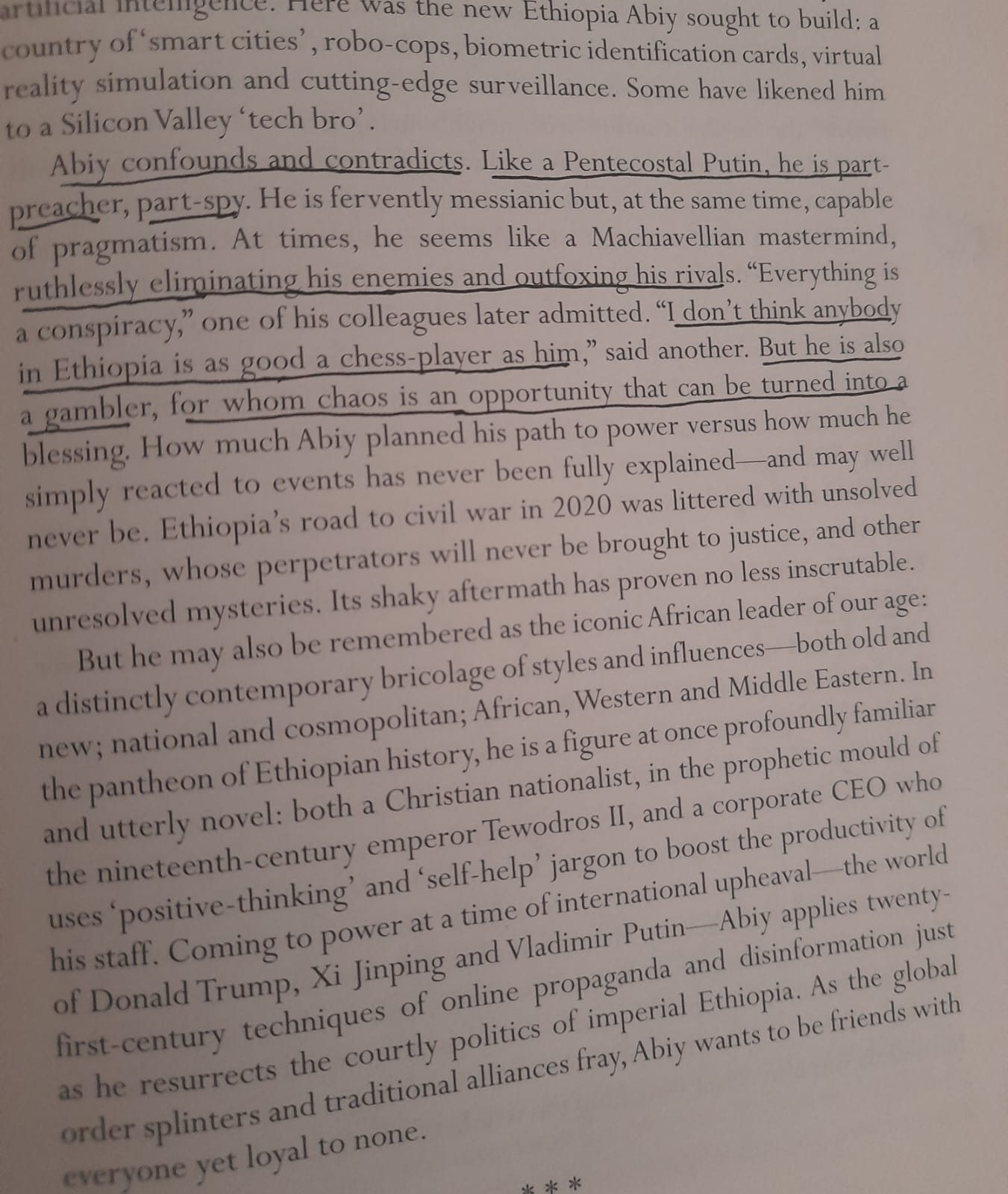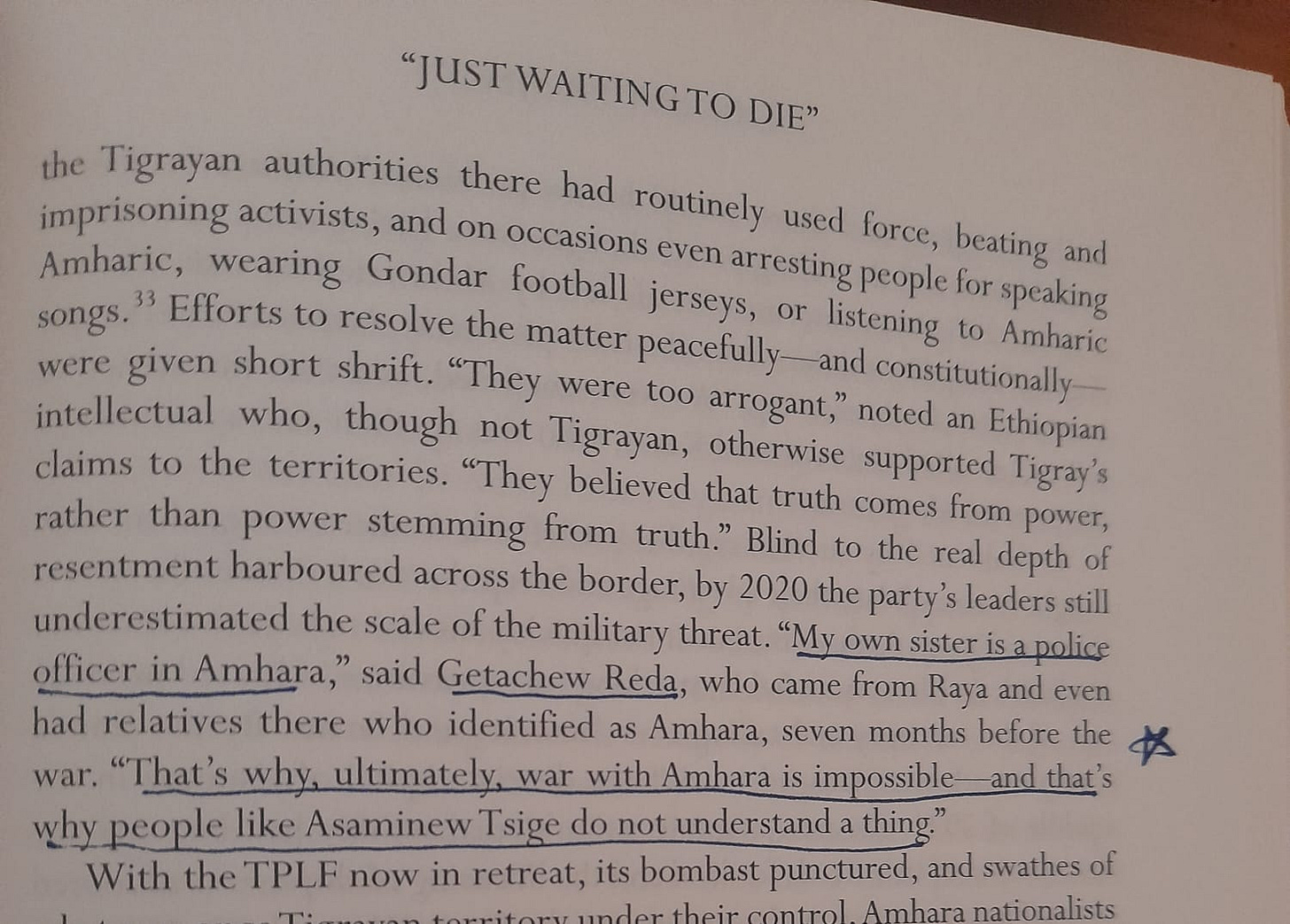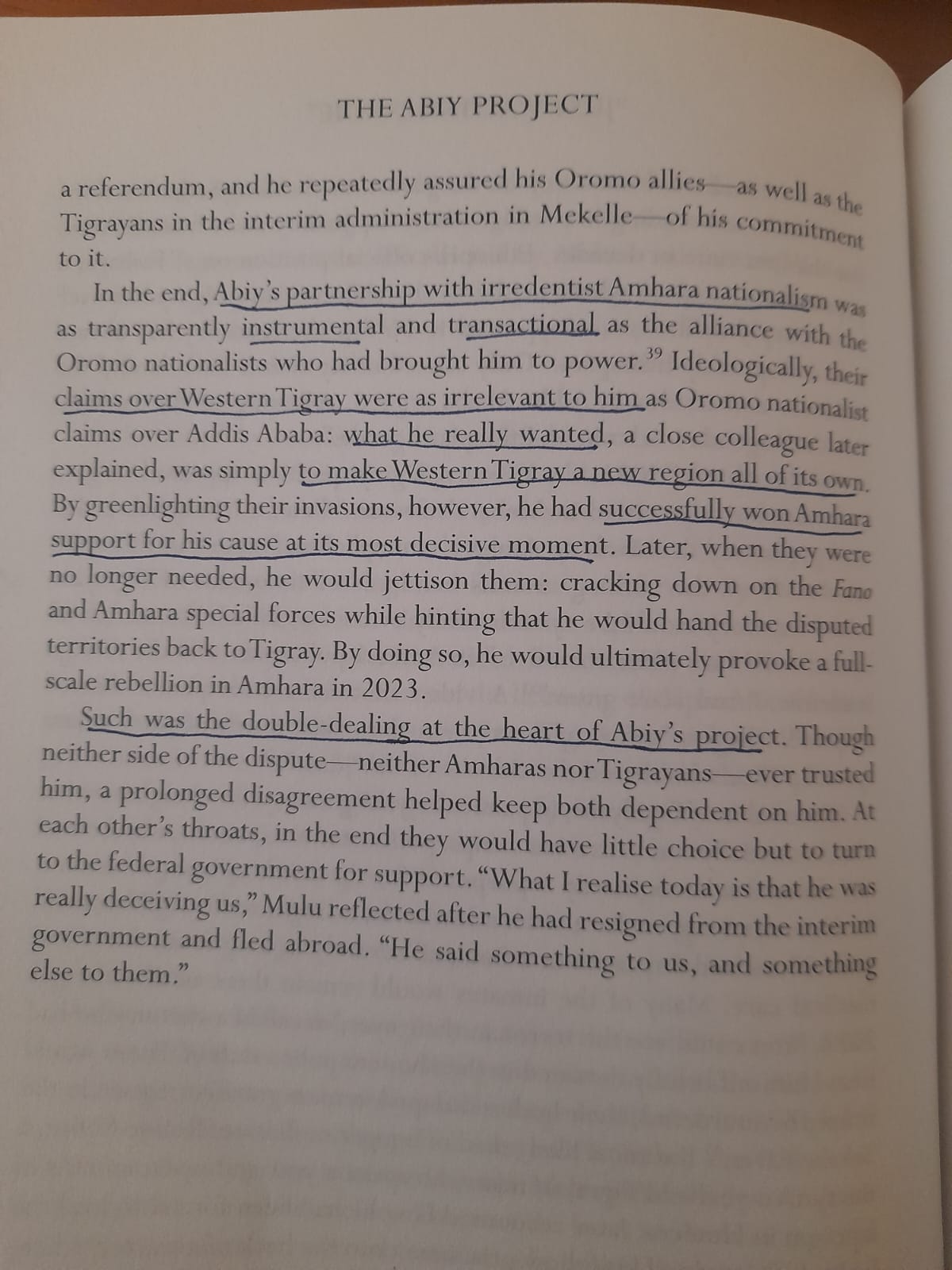A Brief Review of 'The Abiy Project' Book by Tom Gardner
I just finished reading ‘The Abiy Project: God, Power, and War in the New Ethiopia’ by Tom Gardner. As a survivor of the Tigray Genocide and a published author with a memoir titled ‘Primed for DEATH: Tigray Genocide: A Survivor’s Story’ on the genocide, I found the writings accurate, insightful, and contextually wealthy. I was not just informed but also ambushed with flashbacks of all the turmoil I lived through as I struggled to survive. From Abiy's rise to power to his declaration of war on Tigray, up until the Pretoria agreement, and broadly what transpired in the power transition from the EPRDF era to the Prosperity Party, along with all the contradictions that followed. How accurate was one of the reviewers to pen that 'The energy of Gardner's writing is infectious. Especially for those who read the book with their experiences colouring the many moments the text explores'? The way Tom tells the story is so vivid and immersive, sometimes even attracting tiny drops of tears from the sad memories endured. As someone who actively lived through those experiences, I deeply relate to this as I read the book now.
Having been part of the events, I appreciated Tom's book and his way of storytelling of the country's modern political history, which he draws from a rich collection of interviews, various diplomatic sources that many of us had no privilege to access, and his intensive reporting as The Economist's Horn of Africa correspondent based in Addis Ababa at the time, I got a better and a much deeper understanding of the political shifts in the country, not only the intention and brutality of our enemies but also the lies and betrayal of our 'so called' leaders from Tigray.
The first five chapters were especially original for me and ideally demanded my full attention. They revealed who Abiy was before his ascension to power – his ambiguous roots, his plans, how he captured power and the ambitious, messianic image he crafted to become Ethiopia's prime minister or the seventh king of Ethiopia, as he tells himself. Honestly, if Abiy never emerged in our time, no other writer could have captured his story and portrait of him like Tom did. I realised that Abiy did his homework well before his ascend to power and that many of the events that transpired in those years aligned in his favour, convincing you to believe Abiy's ascension to power was beyond luck.
As much as this book is centred around the life of Abiy, the author sheds some light on Ethiopia's complex political landscape and the often-divergent aspirations of the ruling class, revealing Ethiopia as a problem yet to be genuinely practically and politically resolved. Tom's account speaks powerfully to the experiences of Tigray and its people as he narrates the unimaginable violence and injustices committed against us during the height of the genocide. Concurrently, it chronicles the stories of many other Ethiopians across the country – the many voices silenced before or during Abiy's rise to power. While the book critically accounts Abiy's political and personal ambitions for Ethiopia, it also creates space for Tigrayan survivors – in refugee camps in Sudan, Addis Ababa, Kenya, and beyond – serving as a documentation of the atrocities we have endured in the war. I believe this book will be a valuable resource for learners seeking to understand not only Abiy's Project and the modern political history of Ethiopia but also the Tigray Genocide – both now and for the generations yet to come.
P.S. Since the start of the Tigray Genocide, I made a promise to myself never to post any photo that includes Abiy. That’s why I’m not sharing the book’s cover here. But if you’re interested in reading the book and supporting the author, you can find it here.
June 19, 2025.





